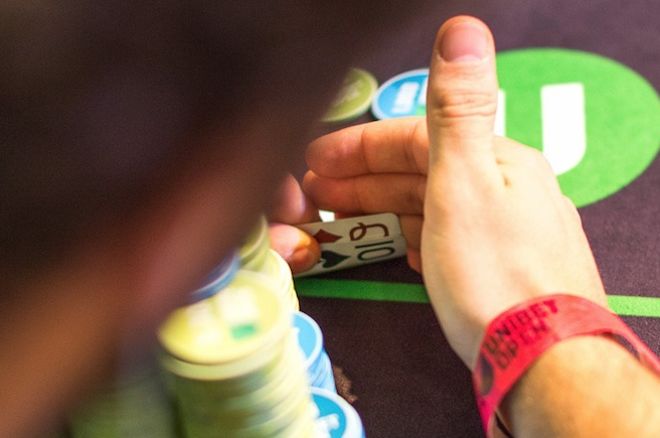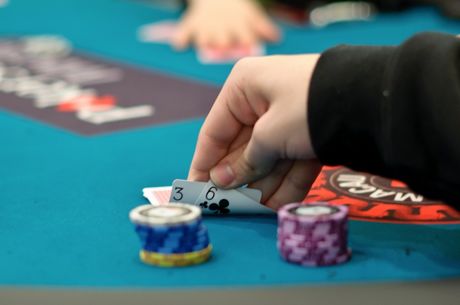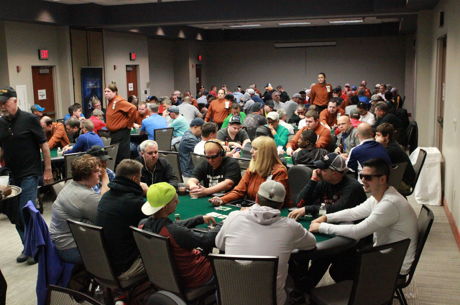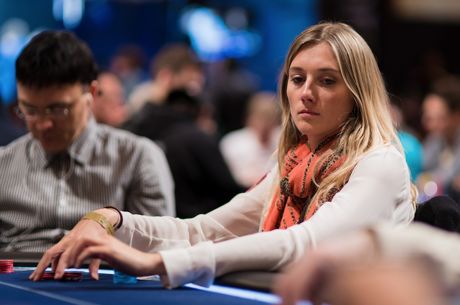Big Problems in Hold'em with "Big Card" Hands

Being dealt a couple of big cards in no-limit hold'em can be very inviting, especially if you've been forced to endure a run of hands where it seems like the highest card you've seen for a while is an eight or nine.
By "big cards" we refer to "Broadway" cards �� i.e., ace through ten. Seeing one of them among your hole cards is nice, but seeing two is even nicer, and for newer hold'em players especially it can be all but impossible not to get involved when dealt such a hand.
Setting aside the pocket pairs and ace-king, however, most of the other two-card combinations of Broadway cards can present potential problems in no-limit hold'em. We're referring to...
- AxQx, AxJx, Ax10x
- KxQx, KxJx, Kx10x
- QxJx, Qx10x
- Jx10x
Let's identify a few of the problems these hands can cause �� problems that can become big ones pretty quickly if players aren't appropriately cautious with these hold'em hands.
Problems Playing Them as "Big Card" Hands
A chief attraction of these non-paired Broadway hands is their "big card" potential. When they connect with the flop, most often it will be by making top pair �� such as when holding K?10? and the flop comes K?7?2?.
However, flopping top pair with hands like Kx10x, QxJx, or even Ax10x isn't always going to be reason to rejoice. Say a player raises from middle position and you've called from the big blind with your K?10?, and that flop does come K?7?2? to give you top pair. How comfortable are you?
When playing most of these non-paired Broadway hands, you often run a risk of being "dominated" by an opponent also holding a king with a better kicker (in this case, an ace, queen, or jack). If you lead out with a flop bet and get called, you may well be setting yourself up to lose a significant pot with a hand that has little chance of being best by the river.
Problems Playing Them as Drawing Hands
Often players are encouraged to play hands like KxQx, QxJx, Jx10x, and others in this group because of their ability to make straights, or if they are suited to make flushes. If the stacks are deep enough, there can be a chance to win a big pot if you can see a flop cheaply with these hands and make a straight with them, especially if your opponent makes a big pair and is willing to pay you off.
As drawing hands, the "connectors" �� KxQx, QxJx, and Jx10x �� have better potential than do the one-gappers (AxQx, KxJx, Qx10x), the two-gappers (AxJx, Kx10x), and Ax10x. However, unless you've taken the preflop initiative (say, with an opening raise to clear out opponents and hopefully gain position postflop), you're going to want to be careful about investing too much because more often than not you won't be flopping straights or straight draws with these hands.
Typically you'll either want to play small pots with such hands or ditch them altogether unless you do manage to fill those draws at which you're aiming. Problems arise when players stubbornly keep calling bets down chasing such draws with poor pot odds, or happen to hit a pair and find themselves dominated (as discussed above).
Problems Getting Trapped
Let's go back for a moment to that K?10? hand. Say you are the one raising before the flop with that hand, a decent player calls you from the blinds, and that flop does come K?7?2?. It's a super-dry board, you've made top pair, and your opponent checks. You make a continuation bet. If your opponent has missed he'll likely fold, and you'll win a small pot.
But let's say he calls, then the turn brings the J? and he checks. You fire again, and again he calls. The pot is getting larger, you've still only got top pair, poor kicker, backdoor draws are starting to emerge, and you have a "sticky" opponent who seems to have something decent.
What hands might he hold? The flop call doesn't suggest any sort of drawing hand. Nor would you necessarily include many 7xXx or 2xXx hands in his range (other than pocket sevens and pocket deuces). In other words, KxXx hands are a distinct possibility, and you wouldn't necessarily expect this decent player to call a preflop raise from out of position with Kx9x or worse.
What's happening here? One likely possibility is that you're getting trapped.
We could switch back the positions and describe a similar scenario in which you're calling postflop bets with your kings and ten kicker �� again, you might be ahead, but you're very likely getting trapped into losing significant chips.
Final Thoughts
When it comes to these non-paired Broadway hands (excluding pairs and ace-king), many experienced players will throw them away from early or even middle position. Even ace-queen falls into this category of hands that many players are exceedingly wary about playing. In fact, Doyle Brunson disliked AxQx so much the hand was named after him for a time, joining ten-deuce as the "Doyle Brunson."
All situations in hold'em are unique, of course, and whenever you decide to play a given hand you're thinking about position, stack sizes, and your opponents' playing styles. But as a general rule, these non-paired Broadway hands are likely best played with caution, no matter the circumstances.
Whether you've taken the preflop initiative by raising with these hands, or are calling another's raise in the hopes of flopping well and perhaps winning a big pot, don't get too carried away with the non-paired Broadway hands �� in particular when you aren't making strong (i.e., better than one-pair) hands with them and/or your opponent is showing interest with calls, bets, or raises.
And above all, don't feel like you always have to play these hands, even if it seems like you haven't been dealt a face card for a while.
Which of these "big card" hands tends to give you the most trouble? Ace-queen? King-jack? Let us know in a comment below.









